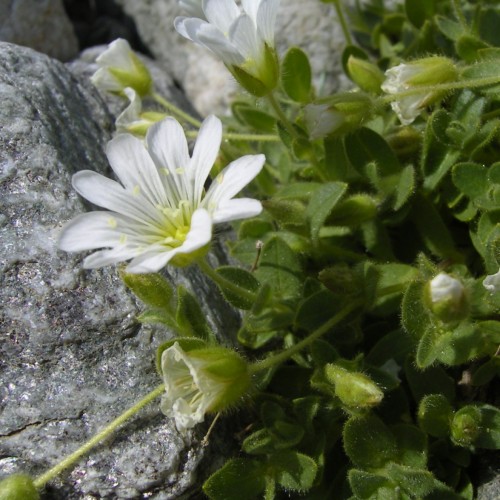
Alpine Chickweed
Cerastium alpinum subsp. lanatum
Watering:
Minimal
Hardiness Zone:
Sun:
full sun,part shade
Leaf:
Yes
Growth Rate:
Low
Drought Tolerant:
Yes
Salt Tolerant:
Yes
Invasive:
Yes
Care Level:
Medium
watering
Alpine Mouse Ear Chickweed needs to be watered deeply about once every week to 10 days, depending on climate and soil conditions. The soil should be kept moist but not overly soggy, and should not be allowed to dry out completely in between waterings. During the growing season, supplemental watering may be needed in hotter climates or during periods of extended dry weather.
sunlight
Alpine Mouse Ear Chickweed, or Cerastium alpinum, is a perennial plant that does best in partial shade to full sun exposure. In areas with low light, this species may become leggy and is less likely to flower. On the other hand, in regions that get intense midday summer sun, it is best to offer some afternoon shade to prevent scorching of the foliage. The amount of light that this species will need will depend on the climate of the area in which it is grown. In general, Alpine Mouse Ear Chickweed will appreciate at least 4 to 6 hours of sunlight each day during the peak growing season. However, if planted in an area with hotter summers, some afternoon shade may be needed to ensure that the heat does not become overwhelming. In late spring and early summer, the flower stalks of the Alpine Mouse Ear Chickweed should be placed in full sun to encourage the most profuse flowering. During the late summer and fall, partial shade may be needed to help the plant to conserve resources and prevent yellowing of the foliage.
pruning
For established Alpine Mouse Ear Chickweed plants, regular pruning is recommended to maintain their shape and size. Pruning should be done in late spring or early summer, after any flowering has passed. Start by removing any dead, damaged, or diseased stems and leaves, then cut back the stems and leaves that are overcrowding the plant. Pruning should stop when the plant is at the desired size and shape.
